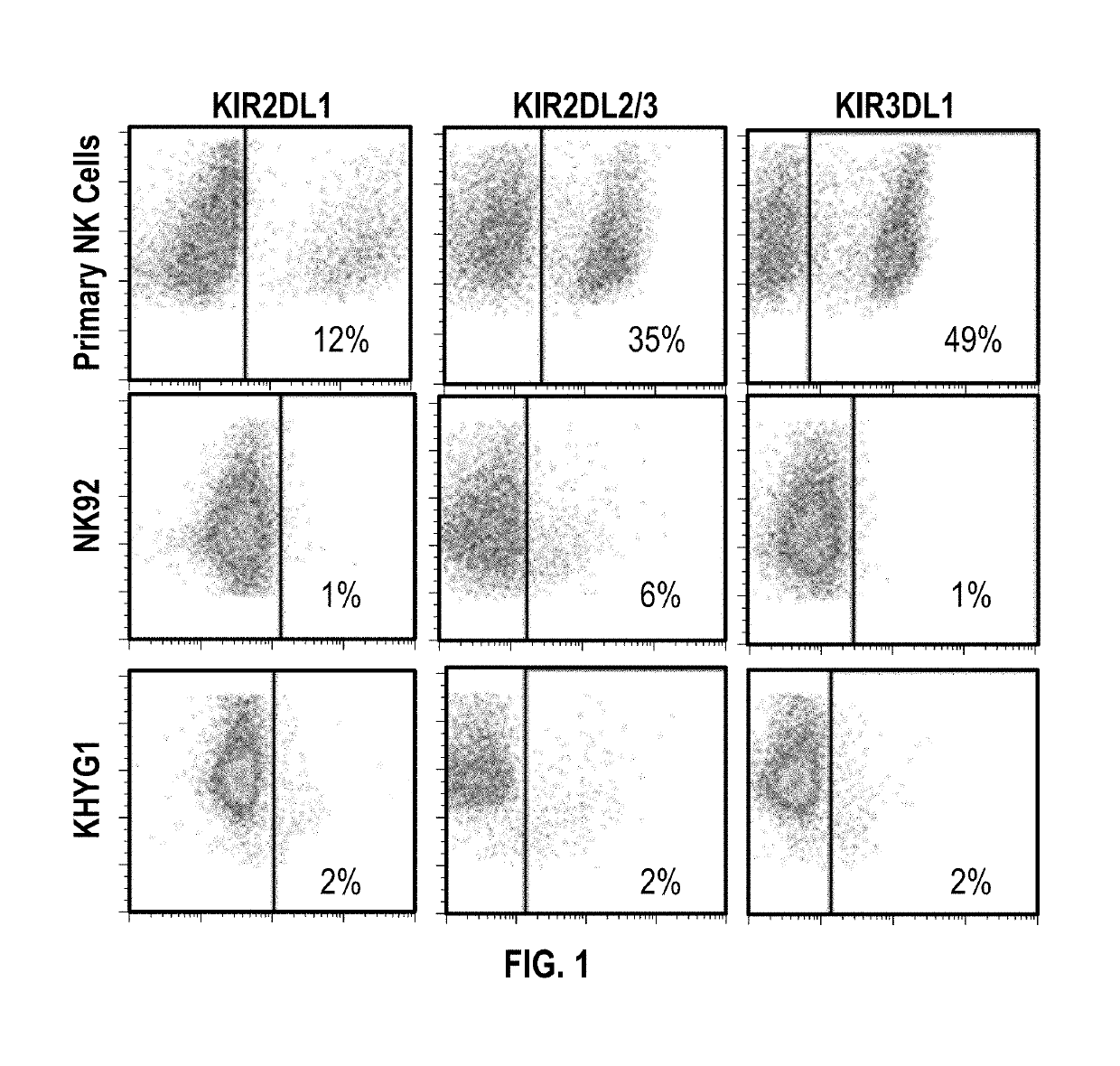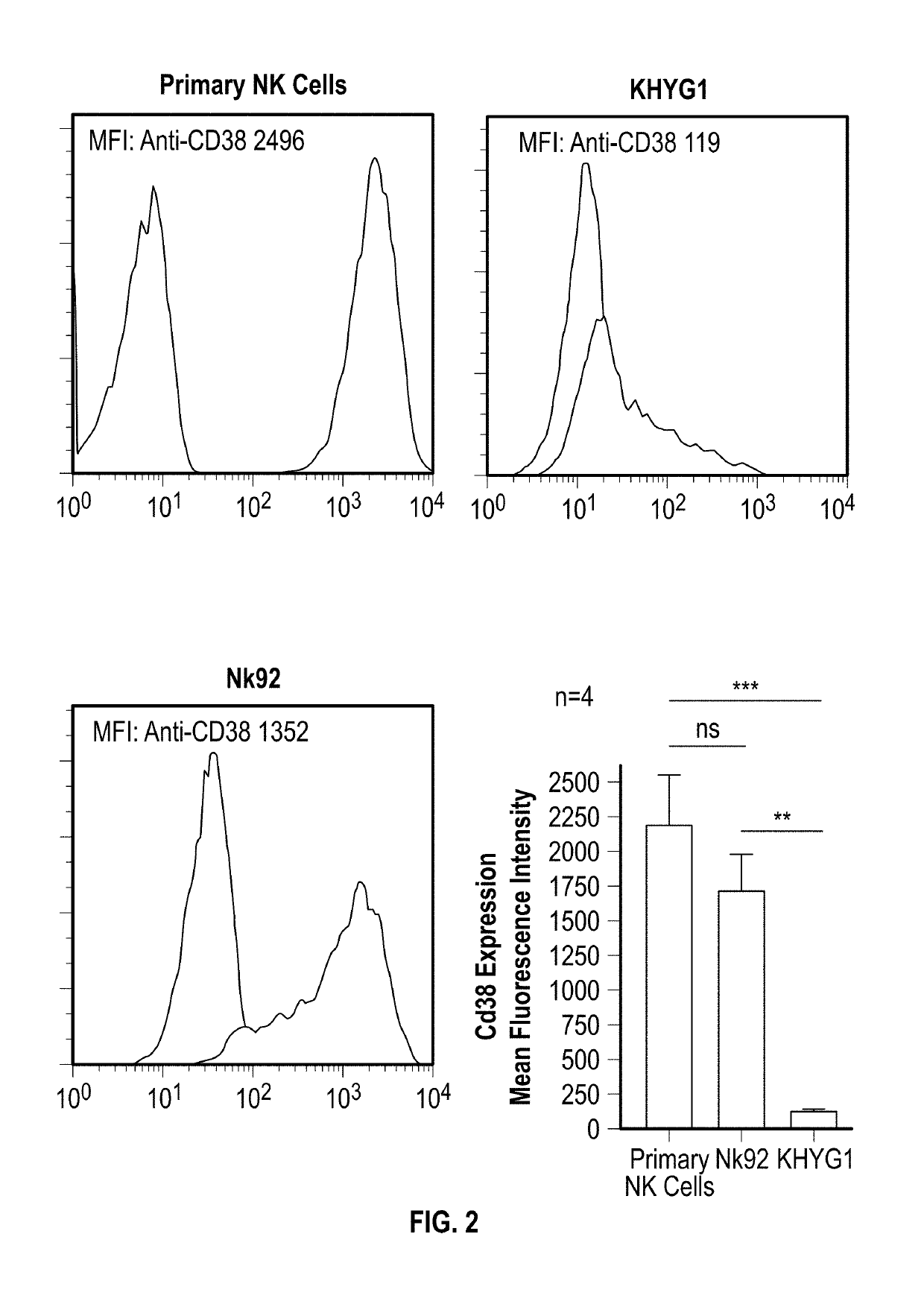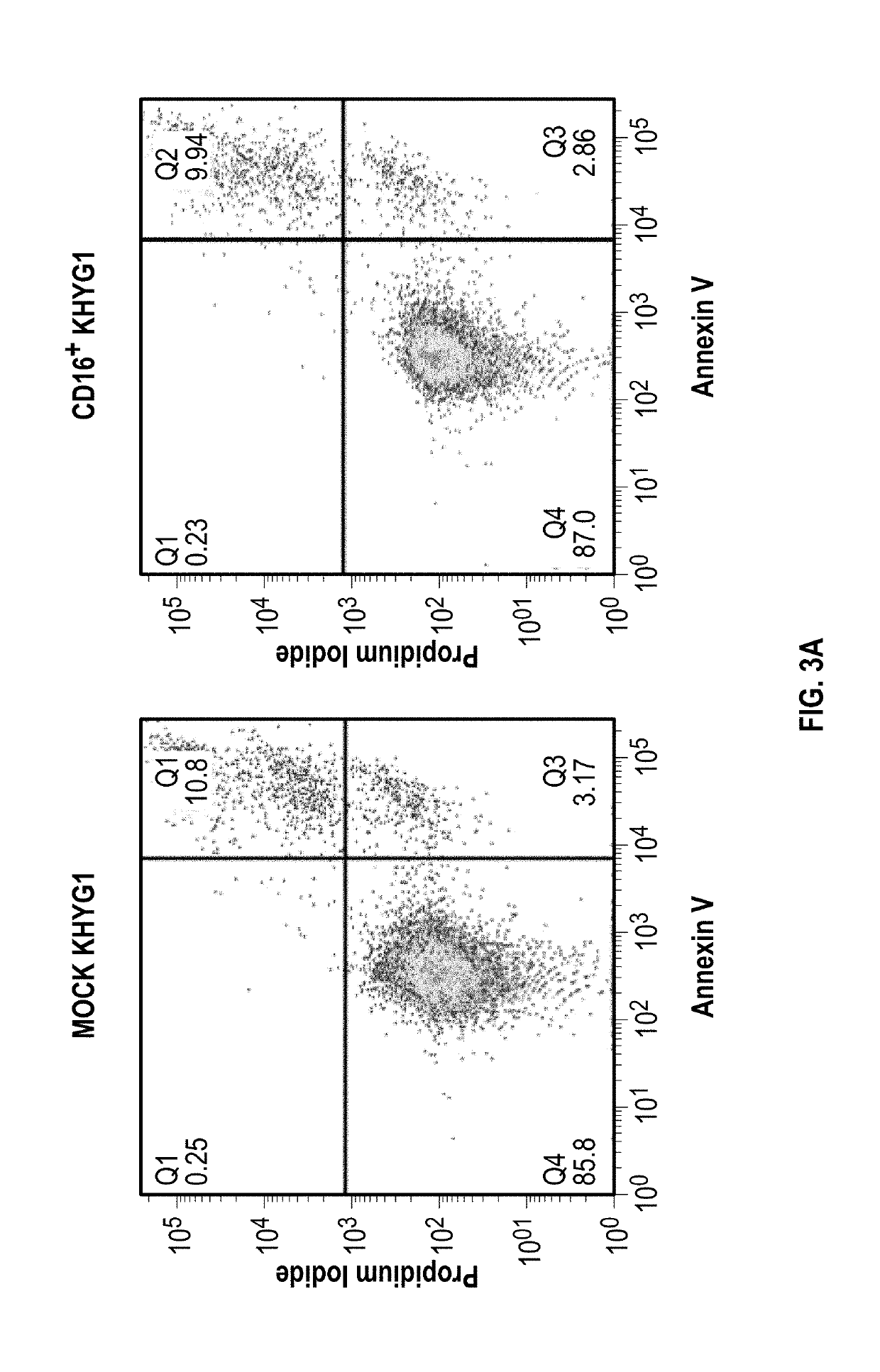Nk cells for use with anitbodies in cancer therapy
- Summary
- Abstract
- Description
- Claims
- Application Information
AI Technical Summary
Benefits of technology
Problems solved by technology
Method used
Image
Examples
example 1
Measuring the Level of CD38 Expression on Multiple Myeloma and NK Cell Lines
[0080]CD38 expression was determined for a panel of cell lines: RPMI-8226, H929, MM.1S, U266 and JJN3 by employing the staining protocol for CD38 expression as set out below. The stained cells were then analysed by flow cytometry (FACS). The results of these experiments are shown in FIGS. 4A-4F (which are representative of 4 separate experiments) and reveal that multiple myeloma cell lines have a broad-spectrum cell surface expression of CD38. The expression of CD38 on KHYG1 cells was low in comparison with at least cell lines MM.1S, RPMI 8226 and H929.
example 2
KYHG1 as a Candidate NK Cell for CD16 Expression
[0081]CD38 and KIR expression was determined for expanded primary NK cells, and cell lines NK92 and KHYG1 by employing the staining protocols for CD38 and KIR expression as set out below. The stained cells were then analysed by flow cytometry (FACS). The results of these experiments are shown in FIGS. 1A-1C and FIGS. 2A-2D. The expression of both CD38 and the KIR inhibitory receptors is much lower in KHYG1 in comparison to the mean fluorescence intensities and expression levels seen for NK92 and expanded primary NK cells.
example 3
Assessing the Viability and Kinetics of CD16 m-RNA Electroporated KHYG1 NK Cells
[0082]mRNA transcripts coding for high affinity (HA) CD16 protein were synthesized using in vitro transcription (IVT), and KHYG1 cells were subsequently electroporated with the CD16 mRNA according to the protocol for Electroporation of CD16 mRNA into KHYG1 NK cells and time course experiments that are set out below. The results of this experiment are shown in FIGS. 3A-3E and show that CD38low KHYG1 NK cells can transiently overexpress CD16 receptor over a period of 120 hours.
PUM
| Property | Measurement | Unit |
|---|---|---|
| Cytotoxicity | aaaaa | aaaaa |
Abstract
Description
Claims
Application Information
 Login to View More
Login to View More - R&D
- Intellectual Property
- Life Sciences
- Materials
- Tech Scout
- Unparalleled Data Quality
- Higher Quality Content
- 60% Fewer Hallucinations
Browse by: Latest US Patents, China's latest patents, Technical Efficacy Thesaurus, Application Domain, Technology Topic, Popular Technical Reports.
© 2025 PatSnap. All rights reserved.Legal|Privacy policy|Modern Slavery Act Transparency Statement|Sitemap|About US| Contact US: help@patsnap.com



